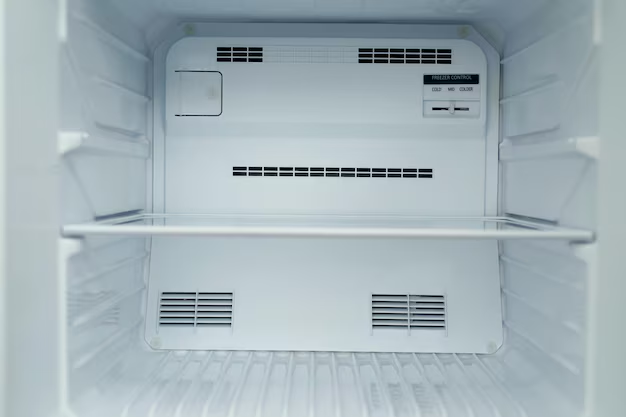Unlocking the Magic: How Refrigerators Keep Cool
Ever stood in front of your refrigerator on a steamy day, enjoying the chilly breeze as you contemplate your snack options? You’re not alone! But have you ever wondered what actually keeps your refrigerator so refreshingly cold? Understanding this process can help you maintain optimal settings, troubleshoot problems, and save energy. Dive in to uncover the science, technology, and best practices behind keeping your refrigerator cold and running smoothly.
🧊 The Core Mechanism: Refrigeration Cycle
The secret sauce that keeps your fridge cold is the refrigeration cycle. This cycle is a series of processes involving a refrigerant that circulates within the appliance, absorbing heat from the interior and expelling it externally. Here’s a simplified breakdown:
Compression: The cycle starts with the compressor, which compresses the refrigerant vapor, increasing its pressure and temperature.
Condensation: The hot, high-pressure vapor travels through the condenser coils (usually located at the back or bottom of the refrigerator), where it releases heat to the surroundings and condenses into a liquid.
Expansion: The refrigerant, now a high pressure liquid, passes through an expansion valve or capillary tube, decreasing its pressure and temperature as it becomes a cool liquid-vapor mix.
Evaporation: This cold mixture then enters the evaporator coils inside the fridge. The refrigerant absorbs heat from the fridge's interior and evaporates into a gas, thereby cooling the air inside.
Cycle Restarts: The refrigerant vapor returns to the compressor, and the cycle begins anew.
Beyond the Basics: Components and Their Roles
While the refrigeration cycle is central, several components ensure its efficiency and reliability:
Compressor
- Function: Heart of the refrigeration cycle, compressing the refrigerant.
- Maintenance Tip: Keep the back of the fridge clean to prevent dust from clogging the vents and overheating the compressor.
Condenser Coils
- Function: Expel heat absorbed by the refrigerant.
- Maintenance Tip: Regularly clean the coils to maintain efficiency and prevent the compressor from overworking.
Expansion Valve/Capillary Tube
- Function: Reduces refrigerant pressure and cools it before it enters the evaporator.
- Insight: A clog or malfunction here can lead to inefficient cooling.
Evaporator Coils
- Function: Absorb heat from the fridge interior, facilitating the refrigerant's phase change.
- Maintenance Tip: Ensure proper air flow by not overcrowding the fridge.
🌡️ Temperature Settings and Their Impact
While the mechanics are crucial, the user settings on your refrigerator also play a vital role in maintaining temperature. Here’s how to get it right:
Refrigerator Compartment
- Optimal Temperature: Generally, aim for around 37°F (3°C).
- Tips for Regulation:
- Avoid overfilling, which impedes air circulation.
- Place a thermometer inside to monitor temperature accurately.
Freezer Compartment
- Optimal Temperature: Target 0°F (-18°C).
- Tips for Regulation:
- Utilize storage bins to organize items and ensure air flow.
- Regular defrosting prevents ice build-up that can hamper performance.
Energy-Saving Mode
Some fridges come with a setting to lower energy consumption during low-use periods. This can be beneficial if you’re aiming to save on electric bills without sacrificing cooling efficiency.
🛠️ Troubleshooting Common Issues
Understanding the basics can also help troubleshoot when the cool suddenly turns warm.
Common Problems and Fixes
Inadequate Cooling
- Cause: Dirty condenser coils or faulty thermostat.
- Solution: Clean coils and check thermostat settings.
Overcooling
- Cause: Faulty temperature control.
- Solution: Inspect and replace temperature sensors if necessary.
Unusual Noises
- Cause: Loose components or faulty compressor.
- Solution: Tighten parts and contact a professional if the compressor seems faulty.
Water Leakage
- Cause: Blocked defrost drain.
- Solution: Clean defrost drain to ensure proper drainage.
🤔 Lesser-Known Facts About Refrigeration
Enhance your knowledge with some interesting tidbits about refrigeration!
Recycling Coolants
- Coolants used today are far more environmentally friendly than in previous decades, focusing on minimizing the ecological impact.
Smart Refrigerators
- Advancements include fridges with smart technology that can monitor contents and even suggest shopping lists.
Historical Evolution
- The principle of refrigeration dates back to ancient times when people used natural ice to preserve food.
🔄 How You Can Extend Your Refrigerator’s Lifespan
Consistent Maintenance is key. Here’s a handy checklist:
- Weekly: Wipe down the interior surfaces and check temperature settings.
- Monthly: Inspect door seals for wear and tear.
- Bi-Annually: Vacuum and clean condenser coils.
- Annually: Have a professional inspection to ensure all components are in good condition.
Summary: Key Takeaways for Optimal Refrigerator Performance
For a quick reference, here’s a neat checklist to keep your refrigerator in peak condition:
- 🌡️ Monitor Temperature: Keep your refrigerator at 37°F (3°C) and your freezer at 0°F (-18°C).
- 🌀 Maintain Air Flow: Avoid overcrowding to ensure efficient air circulation.
- 🧽 Clean Coils: Prevent dust build-up and improve energy efficiency by cleaning coils at least twice a year.
- 🛠️ Routine Checks: Conduct regular inspections of door seals, hinges, and temperature settings.
- ⚙️ Professional Service: Schedule yearly maintenance checks to prolong appliance life.
By understanding the ins and outs of how refrigerators work and applying these practical tips, you can ensure your fridge serves you efficiently and reliably for years to come. Happy refrigerating!
